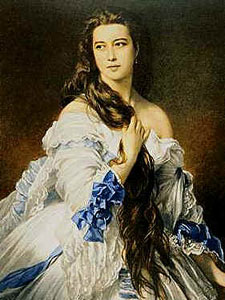 In the days before most Western women could control the size of their families, obtain no-fault divorces, or achieve financial freedom, a magnificent breed of novels portrayed the lives of spirited women who beat helplessly against the societal walls that confined them.
In the days before most Western women could control the size of their families, obtain no-fault divorces, or achieve financial freedom, a magnificent breed of novels portrayed the lives of spirited women who beat helplessly against the societal walls that confined them.
While the best of these novels have retained their aesthetic charm, their plots have come across as mercifully dated — until very recently. If a woman wants to divorce her husband because she doesn’t love him, for example, she can do so in 2012 America. It is no longer possible to frame a contemporary American novel around a woman who can’t escape her legal ties to her husband.
But in the past weeks and months, seemingly anachronistic “women’s rights” issues have returned to the forefront of the national consciousness — and the fictions of centuries past are starting to seem all too real and relevant. Suddenly state and federal governments are threatening access to contraception and abortions; suddenly women (but not men) who have sex for non-reproductive reasons or who raise children alone are under attack. In other words, a woman’s right to control her own body and her family circumstances is being undermined.
The notion of women’s rights does not cross the mind of a character like Emma Bovary, the adulterous protagonist of Gustave Flaubert’s Madame Bovary (1856). Emma is more concerned with romance and luxury than with gender justice. Yet the power to divorce her kindhearted, thickheaded husband in favor of a more suitable mate might have been precisely the tonic required to keep her story from hurtling toward a poisonous disaster.
Like Emma, Anna Karenina of Leo Tolstoy’s Anna Karenina (1877) feels trapped in a loveless marriage: her husband Alexei Alexandrovich is wealthy and socially well-positioned, but his demeanor is cold and his personality dull. Anna, full of sparkling life, finds the warm-blooded Count Vronsky more suited to her taste. Her gender renders her nearly powerless to control the devastating consequences of her adultery; her married brother, on the other hand, faces few major consequences for his own adulterous behavior.
Lest we think only European men wrote novels about the bleak lives of powerless married women, let’s jump across several decades and the Atlantic Ocean.
Edna Pontellier, protagonist of Kate Chopin’s novel The Awakening (1899), is tellingly introduced via her wealthy Creole husband’s gaze on her sunburned body: he appraises her “as one looks at a valuable piece of personal property which has suffered some damage.” It is not long before Edna seeks economic independence and the affection of a man who sees her as a person, not as property. But her chosen partner refuses to run off with her, claiming he loves Edna too much to see her become a ruined woman in Louisiana’s strictly Catholic society.
Clare Bellew of Nella Larsen’s Passing (1929) also flirts with ruin. Her parents were black, but Clare herself is blonde, pale-skinned, and married to a racist white husband. Initially confident that marrying a wealthy white man is her ticket to a better life, Clare comes to believe that any alternative — even the shame and destitution that would surely be her lot — is better than the misery of living in constant fear and loneliness.
The plots of Bovary, Karenina, Awakening, and Passing are all spurred when Emma, Anna, Edna, and Clare respectively decide that their current marital situation is untenable. These four characters might identify with different nations, races, and languages, but they have much in common: they are all attractive, all intellectually curious, and all married to men whose financial position ensures that their wives serve primarily as status symbols, rather than as workers or childcare providers in the household economy.
Most importantly, these characters are all ultimately willing to forsake their status and material welfare for a chance at happiness, despite the extreme price that their societies exact for breaking the constraints imposed on women’s bodies.
The novels that contain these desperate women — all of whom are mothers — don’t necessarily approve of their behavior. Each one, in fact, juxtaposes its central fallen woman with a socially obedient (and rather boring) counterpart: the young ingénue Kitty sets off Anna, for example, and the rigid Irene Redfield sets of Clare, reminding her to “think of what would happen to [her daughter] Margery if Mr. Bellew should find out” that Clare is black.
Yet even if this soulful-woman-trapped-in-
It’s a lesson worth remembering today, as women are once again fighting to maintain the rights we thought were long recognized and established in law. Oppressed and passionate women have historically made for great literature — but let’s keep them far away from today’s reality.
This post may contain affiliate links.








